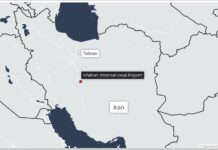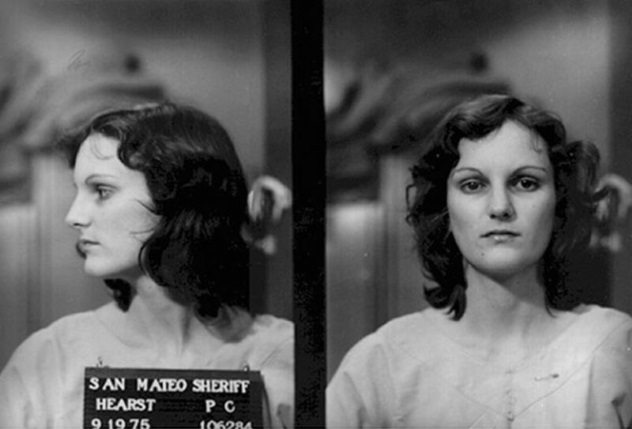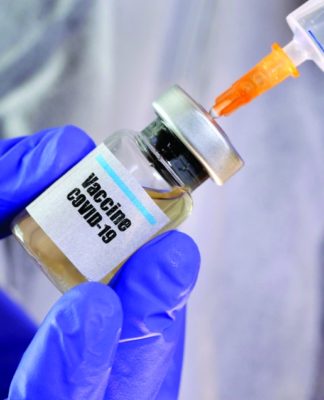The United States of America has produced some incredible heroes, but it hasn’t been immune from creating some evil villains along the way. “Terrorism” is defined by Merriam-Webster as “the systematic use of terror especially as a means of coercion.”[1] It isn’t a 21st-century phenomena, and American participation is a long-standing tradition that many aren’t comfortable admitting. From the Revolutionary War to the rise of the US as a superpower, investigate the top ten American men, women, and organizations, ranked by the horrific results of their violence, who have actively worked to destroy one of the greatest nations in modern history.
10D.B. Cooper

In November 1971, a nondescript man in his forties used cash to buy a one-way ticket from Portland, Oregon, to Seattle. Once on the plane, the man using the name “Dan Cooper” instructed a stewardess via handwritten note that he had a bomb. He showed the bomb to her and asked that she deliver his demands to the pilot. Cooper wanted $200,000 in $20 bills, along with four parachutes. When the plane landed, Cooper made good on his end of the bargain, releasing all 36 passengers but keeping several crew members. He then ordered the plane to Mexico City. Before reaching Reno, Cooper gathered the money and one parachute and jumped from the plane, disappearing into the night.[2]
The FBI began a manhunt that yielded a mere composite sketch of Cooper along with his tie, which he had removed prior to jumping. The tie provided a DNA sample, but the FBI was never able to find a match. Only a rotting package of $20 bills that match the serial numbers used in the hijacking, found by a boy in 1980, remains. As of 2016, the FBI suspended the investigation, preserving this case as one of the bureau’s greatest unsolved mysteries. Why did D.B. Cooper request four parachutes? Did he die on impact, or was he able to live the rest of his life as an unidentified thorn in the side of the ever-powerful FBI?
9Michael Bray

A confirmed Christian, Lutheran pastor, teacher, and convicted felon, Michael Bray believes that the killing of those who actively assist in abortions is justified. In the early 1980s, Bray participated in the bombings of abortion clinics and was charged with conspiracy as well as possessing unregistered explosive devices. Bray maintains that while nonviolence may be a strategy, using force is also an option with which he is comfortable.
After serving four years for his crimes, Bray returned to his suburban home, where he is still an active pastor and teacher in addition to publishing YouTube videos, maintaining his own website, and granting interviews advocating for the end of abortion rights in the United States.[3]
8Donna Joan Borup

Donna Joan Borup joined a terrorist group called the May 19th Communist Organization. The group hoped to work for worldwide racial equality but also advocated a violent revolution against the United States government in favor of Communism.
While participating in what was advertised as an anti-apartheid rally, Borup tossed a chemical agent at a law enforcement officer, leaving him blind. The rally turned violent, resulting in many other assaults. Borup was initially arrested in 1981 but fled trial and was last seen in Eastern New York state. She is still unaccounted for and is considered armed and dangerous.[4]
7Boston Tea Party

Could the foundation of the United States of America have much to owe to an early act of domestic terrorism? Fed up with continued British interference with their businesses and wallets, dozens of colonists dressed as Native Americans dumped 342 crates of tea into Boston Harbor on December 16, 1773. This act is the very definition of terrorism, as they intended to force the East India Company and Britain to revoke their latest sets of taxes after seeing the lengths the colonists would go to in order to resist what they saw as unlawful interference. The dumping of the tea cost the East India Company the modern-day equivalent of $1 million and was quickly condemned by many, including George Washington. Washington believed private property was sacred and that those who carried out the attack should be required to repay the company for its losses.[5]
The men involved in the tea party did not pay and were not publicly known until decades later. In fact, the Boston Tea Party was not known as such until the 1830s. This early act of domestic terrorism inspired many others from South Carolina to New York to partake in destruction of private property and helped bring attention to a growing call for independence that would ultimately forge one of the strongest nations on Earth.
6Leo Burt

Wisconsin may be most famed for its dedication to cheese, but a native son found he had more of an appetite for destruction than dairy. Leo Burt is currently wanted for the 1970 bombing of Sterling Hall on the campus of the University of Wisconsin.
The FBI alleges that Burt was involved in the theft of a van that was then loaded with explosives and parked in front of Sterling Hall. When the explosives detonated, the fire it created left one young researcher dead and the University of Wisconsin with over $6 million in damages. Burt was last seen driving the getaway car from the scene of the bombing and should be considered armed and dangerous.[6]
5Eric Rudolph

With a million-dollar bounty on his head, Eric Rudolph eluded capture for his acts of domestic terrorism for more than half a decade. From a devout but anti-Semitic Christian family, Rudolph translated his anger into an intense hatred for abortion and the US government. He sought to take out those he hated through numerous bombings: an abortion clinic in Birmingham, a gay club, a second abortion clinic (both in Atlanta), and most famously, the 1996 Centennial Olympic Park bombing.
The Olympic Park bombing led to dozens of injuries, including several law enforcement officers, and the death of one mother. Initially, another man, Richard Jewell, was identified as a suspect in the Olympic bombings because he found the suspicious package that contained the explosive materials. Many believed Jewell sought attention to feed a hero complex, but that belief led investigators off the trail of the real murderer. Jewell was later cleared of all suspicion, and authorities began searching for Eric Rudolph instead.
Rudolph eluded capture in the North Carolina mountains for more than five years, costing the US government he hated more than $24 million in the process. Initially surviving off a diet of raisins, trail mix, and tuna, many believed that the locals of Murphy, North Carolina, later helped Rudolph survive. A rookie police officer located Rudolph hiding behind milk crates near a grocery store. Once captured, Rudolph cooperated, confessing to his crimes. Rudolph was found guilty and is currently serving life in prison.[7]
4Theodore Kaczynski

Ted Kaczynski is more commonly known as the Unabomber, an acronym created by the FBI to describe the tactics of this American terrorist. “Unabomber” described Kaczynski’s “UNiversity and Airline BOMBing targets.” His attacks began in 1978 at a Chicago university and eventually developed into a series of hand-delivered or mailed explosive devices that resulted in over two dozen injuries and killed three American citizens.
What were this terrorist’s motives? Goals? Selection process for his victims? It seemed a confusing maze for the FBI until Kaczynski made a key mistake: He sent a 35,000-word essay to the FBI, and the agency published it in The Washington Post as well as The New York Times. Thousands of leads poured in, but one from a David Kaczynski stood out to agents. David provided the FBI with writing samples and evidence linking the Unabomber’s activities to his brother, Ted. It seemed as though Ted had lived near or worked at each of his targets before disappearing into his family’s primitive Montana cabin.
When agents arrived at Ted Kaczynski’s residence, they found a live explosive device as well as journals detailing bomb blueprints and plans. With the Unabomber’s arrest, the work of over 150 FBI agents across 17 years was rewarded. Kaczynski confessed and is currently housed in a “Supermax” prison in Colorado.[8]
3Patty Hearst

The privileged heiress to the Hearst publishing empire, Patty Hearst was kidnapped at gunpoint by the terrorist organization known as the Symbionese Liberation Army (SLA) in 1974.[9] Hoping to hold their new hostage for food aid to the poor, negotiations broke down between the terrorists and the Hearst family after $2 million had been donated. The group turned to using their high-profile captive as PR for their cause to free the oppressed people of the world and to overthrow the “Capitalist State.” Hearst recalls that the group tortured her, keeping her in a closet for 57 days and subjecting her to beatings, brainwashing rhetoric, and rape.
Convinced she had no other choice, Hearst joined the group and began brandishing guns during bank robberies. She narrowly escaped to a California motel near Disneyland while many of the more senior leaders of the group were killed in a fire that destroyed their safe house. The FBIhunted Hearst and the rest of the surviving members before finally finding them in San Francisco. Photographed smiling in handcuffs, many were confused as to whether Hearst’s conversion to terrorism was forced or voluntary. Hearst was found guilty and sentenced to seven years in prison but only served two years.
Since her release, Hearst has become an author, actress, wife, and mother, but questions still linger about her true allegiance. Is she the unfortunate pawn of terrorists or the classic poor little rich girl who has masterfully profited from her sensational choices?
2The Haymarket Affair

Were these true American terrorists or outspoken activists who, pitted against the mighty US government, took the fall for their unpopular opinions? In 1886, working conditions for average Americans were bleak. Many men, women, and children worked more than 12 hours a day without safety precautions in jobs that paid less than a dollar a day. In Chicago, the citizens had reached their breaking point; several workers had been injured during their protest of the McCormick Reaper Works. Feeling betrayed by those who were sworn to protect them, a group of men decided to make the police department pay the next day in Haymarket Square.
These men, who the government maintained were socialist radical terrorists, refused to peacefully disperse at the Haymarket Square protests on May 4, 1886. In response, someone in the crowd threw a bomb at a police officer, and shots rang out on both sides of the protest. The incident became known as the Haymarket affiar. When all was said and done, seven police officers and one civilian were dead, and many more were injured. No one was able to positively identify the attackers, and the police were unable to gather any concrete evidence. Instead, law enforcement officers rounded up scores of immigrant workers, and a high tide of xenophobia gripped not only the city of Chicago but the nation as a whole. Eight men were charged with the violence in Haymarket Square, and even without any good evidence, the prosecution won convictions against all eight. Seven were sentenced to die, and the eighth was given 15 years in prison.[10]
Public opinion began to question whether these men were truly the culprits amid reports of a biased jury. Four of the men were hung or committed suicide prior to execution, while the remaining three first had their sentences commuted and then were finally pardoned in 1893. A statue stands at Haymarket Square in remembrance of the police officers who lost their lives, and a similar statue was erected in 1893 for the four men who, through the loss of their lives, brought national attention to the labor movement.
1Wall Street Bombing Of 1920

In later years, the FBI would blame a small group of Italian-American anarchists for one of the earliest cases of terrorism in the United States. An ordinary man parked his horse-drawn cart across from the J.P. Morgan building in New York City on September 16, 1920. Several minutes after the cart driver seemingly disappeared, the cart exploded, killing 30 and wounding over 300 bystanders on the crowded New York streets.[11]
The US Secret Service as well as the forerunner to the FBI searched for evidence to help bring the bombers to justice. In the end, they were left with four posters decrying the US government in support of an Italian anarchy group. It is believed that those responsible fled the United States and more than likely emigrated back to Italy. No charges were pressed in this mystery, and sadly, this would not be the last act of terrorism to plague New York on an early September morning, as the 9/11 terrorist attacks would occur almost to the day 81 years later.
Follow us on Facebook or subscribe to our daily or weekly newsletter so you don’t miss out on our latest lists.






























